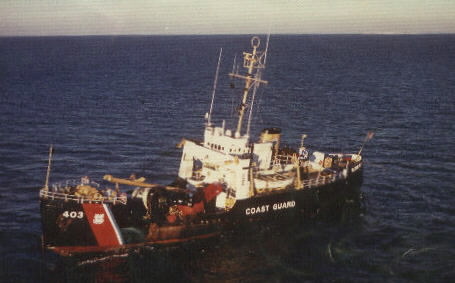
USCGC SPAR Museum

The History of SPAR
CGC SPAR was named after the original Coast Guard Women’s Reserve and is an acronym for the Coast Guard motto "Semper Paratus, Always Ready." Built at the Marine Iron and Shipbuilding Company in Duluth, MN, SPAR was launched November 2, 1943. After being commissioned on June 12, 1944, SPAR was subsequently stationed in Boston, MA in August 1944. Upon commissioning, SPAR was quickly directed to assist in the war effort by supporting anti-submarine warfare during convoy duty off the coast of Brazil.
On December l, 1946 SPAR’s homeport changed to Wood’s Hole, MA. SPAR was moved again on June l, 1957 to Bristol, RI..
In 1957 SPAR conducted oceanographic operations through the Northwest passage. The culmination of this assignment occurred when the Coast Guard Cutters STORIS, BRAMBLE, and SPAR became the first vessels to circumnavigate the North American continent. President Dwight D. Eisenhower sent his personal congratulations for this significant accomplishment. This impressive history was further added to in 1966 when SPAR logged over 17,000 miles and visited such ports as Iceland, Norway, Denmark, Germany, and Ireland while conducting an oceanographic charting expedition in the Northern Atlantic.
The cutter’s homeport changed again in April 1967 to Boston, MA where it and the cutter CACTUS traded captain and crew.
In March 1973 SPAR moved to its last homeport in South Portland, ME. SPAR went to Refresher Training in Little Creek, VA in 1981 and achieved the highest marks ever earned by an oceangoing buoy tender. In 1983, 1985, 1988, 1990, 1992, and 1995 SPAR again returned from Little Creek with outstanding marks and proudly displayed a gold "E’ with three gold stripes for nine consecutive overall "Excellent" scores in operations and seamanship training. Because of this, SPAR was recognized by Vice Admiral Paul Welling, Atlantic Area Commander, as "The cutter with the most gold" in the Atlantic Fleet.
SPAR was a class "C" buoy tender with an overall length of 180 feet, a beam of 37 feet, and a draft of 13 feet. The ship’s hull was constructed of welded steel and has a total displacement of 1025 tons. SPAR was a single screw driven vessel with a bow thruster. It is diesel-electric driven and generated 1200 horsepower for a maximum speed of 12 knots. The ship’s compliment consisted of forty-five enlisted members and eight officers.
The primary port calls for SPAR were Rockland, Maine and Southwest Harbor, Maine. Less frequent port calls are made to Portsmouth, New Hampshire, Boston, Massachusetts, and Newport, Rhode Island.
SPAR was decommissioned on Friday, the twenty eighth of February 1997.
Diving the Spar (requires adobe flash http://get.adobe.com/flashplayer/)
Spar was intentionally sunk to become an artificial reef. It is located about 40 miles south of Morehead City, North Carolina. In 100 feet of water.
Diving the Spar from Jim Collins on Vimeo.
Life boat leaving SPAR to go ashore to Jan Mayen Island Norway for a little r&r while on her 17,000 mile journey across the north Atlantic, up past the realm of the arctic circle and all throughout Europe's many ports back in 1966. The video on the right shows the homecoming. 8mm film contributed by seaman Kyle Chapman
|
Click here to see more videos |
|
Photo Album*:(click on a year)
1944 1949 1955 1957 1959 1962 1963 1966 1967 1969 1970 1975 1976 1977 1978 1979 1980 1981 1982 1983
The scuttling operation 2002 - 2004
Commanding Officers of the Spar
Click here to download the Spar Decommissioning Ceremony brochure (in Adobe Acrobat format)
Click here to see two coast guard shipmates reunite after 43 years
The Story of the Northwest Passage
Click here to go to the Cutter Room Reunion Hall at Freds Place
Lighthouses on the coast of Maine
*If you have Spar pictures or if you know someone's name in one of the photos get in touch with me at john@hagertygrain.com